How To Use Xampp To Host A Website
Mar 16, 2022
Will G.
7min Read
How to Use XAMPP to Ready a Local WordPress Site (In 3 Steps)
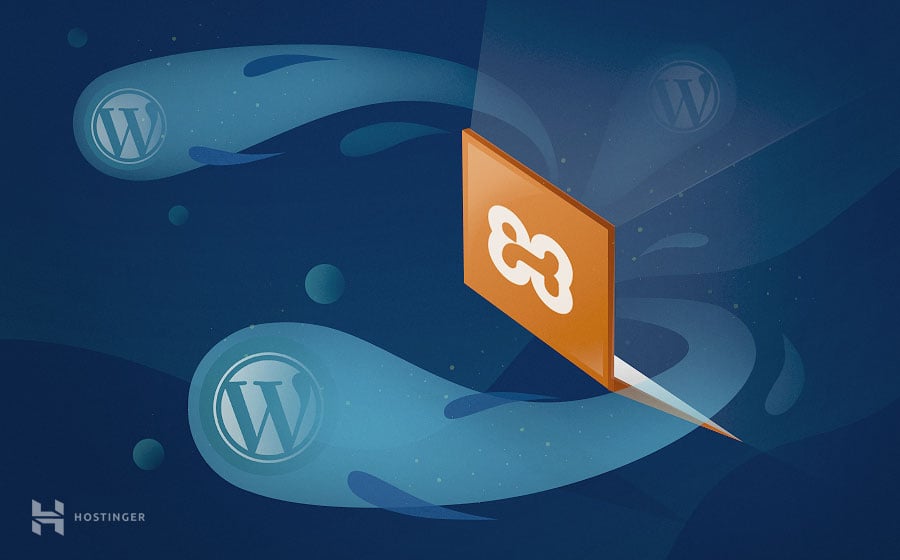
Setting up a locally-hosted environment is a crucial step in whatever WordPress development projection. Doing this enables you to safely test your site'due south features and functionality, on a site that's completely private.
Download Ultimate WordPress Cheat Sheet
In this article, we'll explore how to utilise XAMPP to fix a local web server for developing and testing your WordPress site. This involves three steps:
- Install XAMPP.
- Run XAMPP and configure your environment.
- Download and run WordPress.
We'll also hash out some all-time practices for experimenting with code and testing WordPress using XAMPP. Finally, we'll cover how to use XAMPP with a WordPress multisite installation. Let's dive in!
Why You Might Need a Local WordPress Site
A locally-hosted WordPress site is 1 that is only accessible by people on your network (that is, there are no live components). As such, this type of site tin can serve as a condom environment, in which new features and troubleshooting methods can be tested.
Local websites are perfect for performing the post-obit types of tasks:
- Creating new themes and plugins: When using a local site, you don't need to worry about whatsoever of the problems yous might encounter when developing on a live WordPress site.
- Website staging: You lot can create a copy of a live website, which can then be used for testing purposes.
- Site debugging and troubleshooting: Working under the hood of your live site in guild to resolve bugs or other issues may pb to bigger bug (and, potentially, costly downtime). By creating a local WordPress site, you tin can attempt out various solutions, and easily restore previous versions of your site should you brand whatever mistakes.
For these reasons, creating a locally-hosted WordPress site is highly recommended for just about any evolution project. Kickoff, however, you'll demand a tool that will brand the process of setting upwardly a locally-hosted site quick and easy.
An Introduction to XAMPP
A few crucial ingredients are needed if y'all desire to install WordPress locally. These consist of web server software (such as Apache), programming languages like Perl and PHP, and the database management software – MySQL. Installing each of these elements separately, all the same, is time-consuming and difficult.
XAMPP (an acronym for cross (x)-platform, Apache, MySQL, PHP, and Perl) enables you lot to install all these elements rapidly and easily. You can then use XAMPP to ready up the environment required to run WordPress on a local motorcar. At that place, you can test plugins, experiment with themes and coding, and carry out other development activities safely.
XAMPP is gratuitous and open-source software, backed-upward past a sizable support community. It's also extremely lightweight, and all the elements required to prepare a local web server are contained within a unmarried extractable file. What's more, learning how to use XAMPP is relatively straightforward, as we'll discuss in the following XAMPP tutorial.
How to Use XAMPP to Ready a Local WordPress Site (In three Steps)
In the following steps, we'll walk yous through how to use XAMPP and install WordPress on it. For this tutorial, nosotros will be covering the steps for the Mac version of the software. However, XAMPP can likewise be ready and run relatively easily on both Windows and Linux devices, using a similar process.
Footstep 1: Install XAMPP
First of all, yous'll need to go to the Apache Friends website, and select the relevant download link on the homepage:
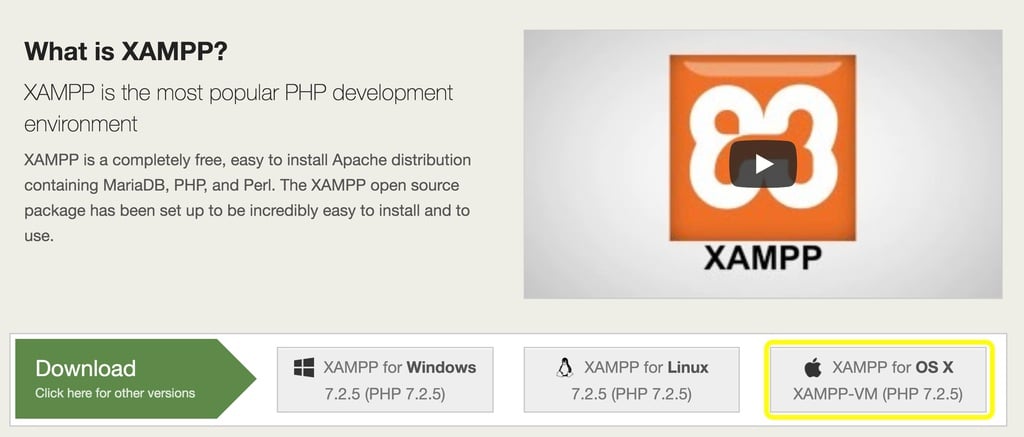
Adjacent, drag XAMPP into your Applications binder:
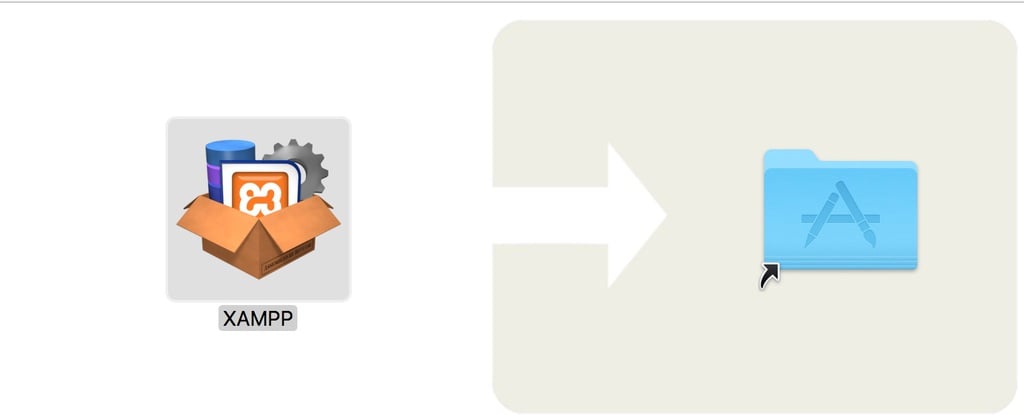
Once the initial loading sequence is completed, XAMPP will exist installed on your arrangement. This part of the setup process doesn't require much on your end.
Information technology should be mentioned that if you lot are running XAMPP on Windows, and another programme on your auto is using ports lxxx or 443, yous may encounter a port error. For instance, the World Broad Web Publishing Service program commonly uses port 80 and may cause a disharmonize with XAMPP.
To resolve this, you'll demand to stop that service from running by doing the following things:
- Navigate to the Windows Start card, and type in services.msc.
- In the Services window, locate Globe Wide Web Publishing Service.
- Right click on it, and select the Stop push.
- Restart XAMPP. The port error will be resolved if World Broad Web Publishing Service was the culprit.
If this doesn't resolve the issue, it may be caused by your Windows firewall. To forcibly unlock your ports, y'all will need to set up a new firewall rule:
- Open upwards Windows Firewall and navigate to Advanced Settings.
- Become to Inbound > New Rule.
- Go to Port > TCP. You'll have to blazon 80,443 in the field labelledSpecific Ports, and then click onSide by side.
- Select Allow the Connectedness, then click onNext again.
- Make sure all listed options are checked and continue to the next page.
- In the Name field, blazon in a memorable name (such equally host1) and select Finish.
- You lot'll now need to repeat steps one to half-dozen, irresolute the name again (i.east. tohost2) to articulate the port.
- Restart your estimator. Ports 80 and 443 should now be unblocked and open locally.
In one case XAMPP is installed, y'all'll be all prepare to start running XAMPP.
Step two: Run XAMPP and Configure Your Environment
Now, open up up the XAMPP awarding and hit the Starting time button. You should see a greenish light in the upper right-hand corner of the display:
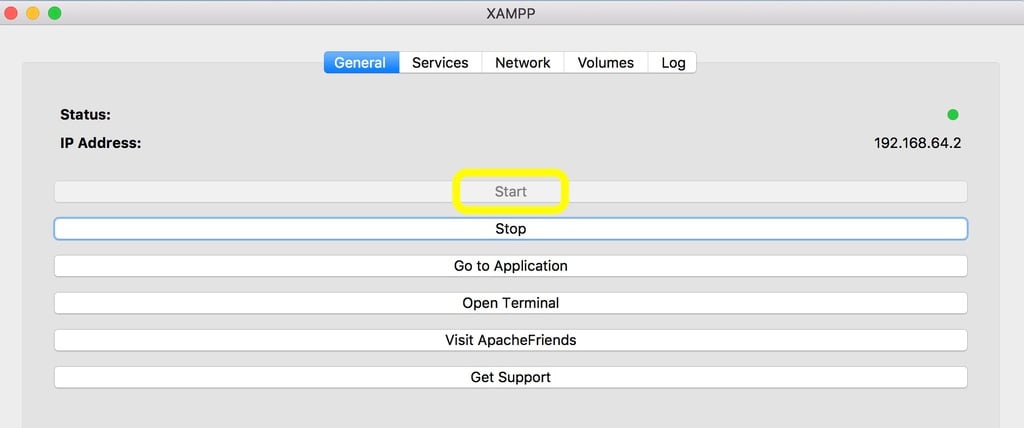
Next, navigate to theServices tab. You will need to ensure that the condition of both the Apache and MySQL stack services are running (i.e. that they have a green light). This will ensure that your database management and server software elements are in place for your local surroundings. For now, you can ignore ProFTPD (which is a configurable File Transfer Protocol server).
If MySQL or Apache are not running (if they brandish a red light), simply select them and striking Start:
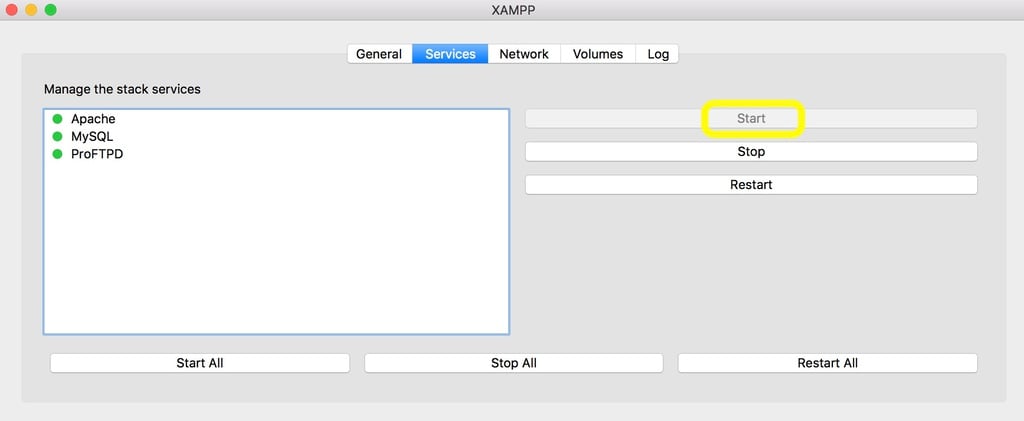
Then, switch over to the Network tab. Here, you lot can ascertain the port forwarding rules between your host machine and your stack. Select the localhost option you wish to work on, so hit the Enable button. In this instance, nosotros volition be using localhost:8080:
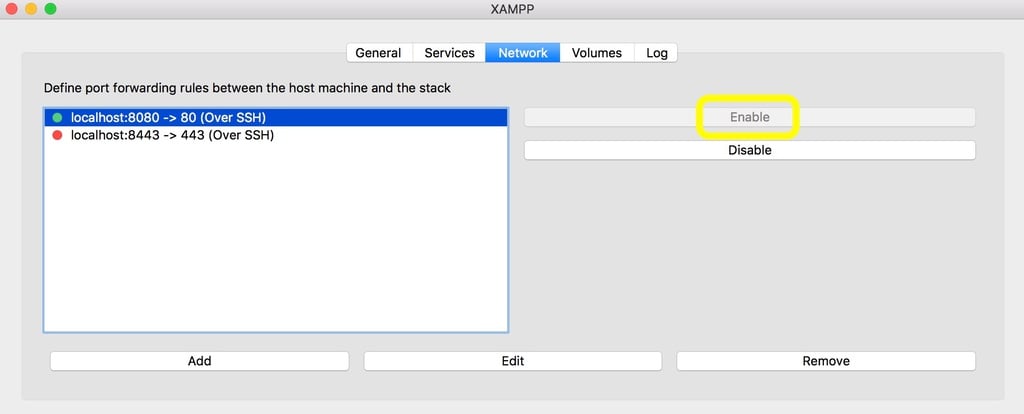
You will now exist able to admission your localhost, and start using XAMPP every bit a server environment. To practice this, open upwards your preferred web browser, and type in your localhost name (which in our instance would be localhost:8080). This will bring upwards the XAMPP dashboard. Once there, select the phpMyAdmin button in the top correct-hand corner of the folio:
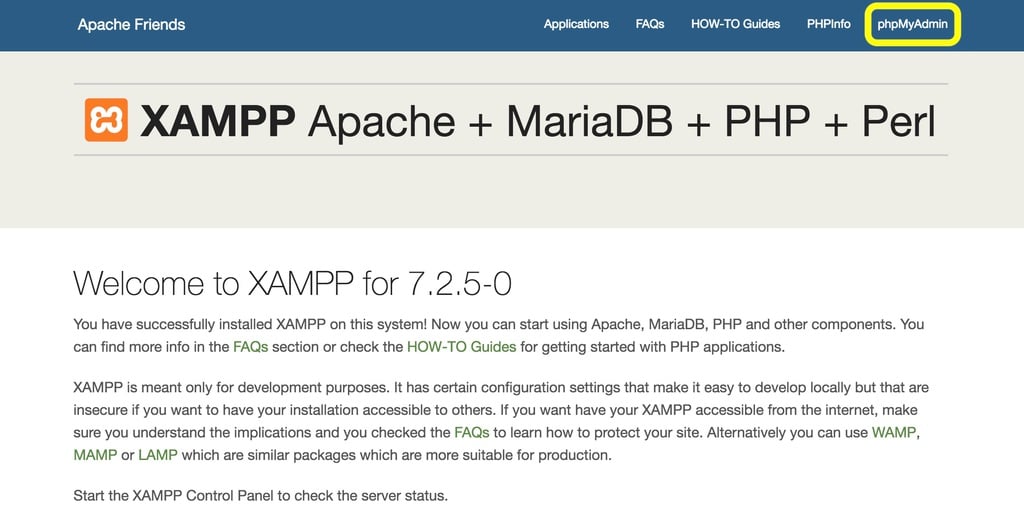
You lot'll then need to create a database for your WordPress installation. To do this, select the Database tab, type in a name for your database (in our case, we'll just get with WordPress), ensure the adjacent drib-downwardly card is set to Collation, and and then hit Create:

After that, y'all'll be gear up to learn how to install WordPress on XAMPP.
Pace 3: Download and Run WordPress
At this point, you'll need to become to WordPress.org and download the latest version of WordPress:
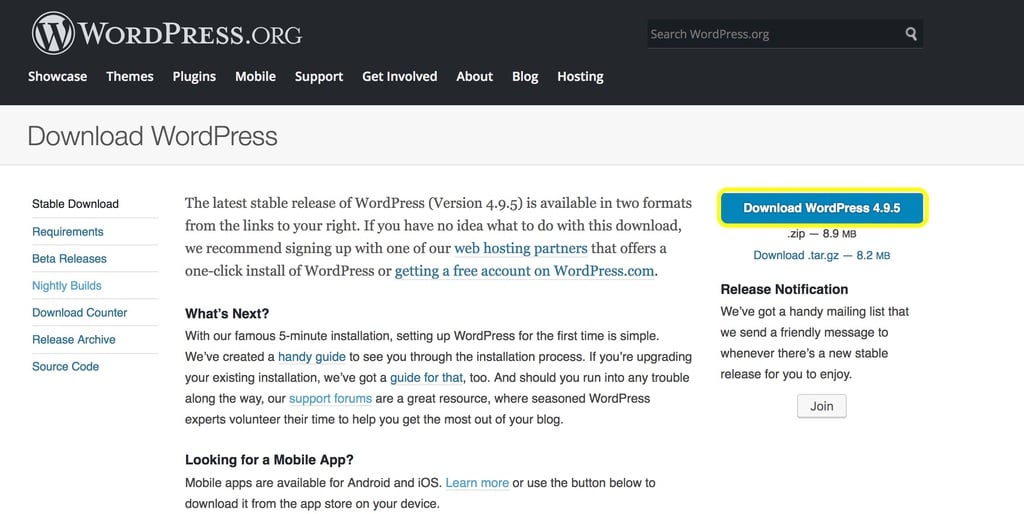
Open up upwardly the WordPress folder on your car, and locate the wp-sample-config.php file:
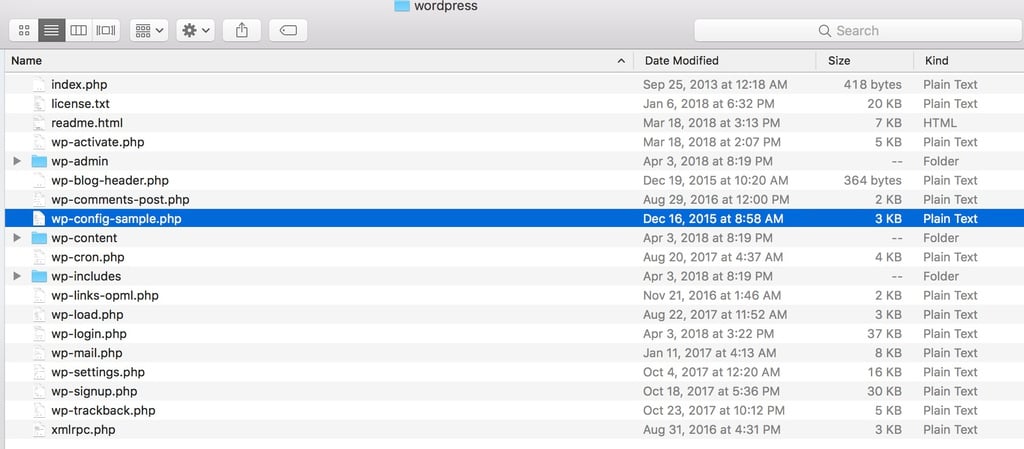
Open this file in your preferred text editor (such as TextEdit). You'll demand to locate this line of text:
define('DB_NAME', 'database_name_here'); Replacedatabase_name_here with whatever y'all named your database in the last step. Then, look for these 2 lines:
ascertain('DB_USER', 'username_here'); define('DB_PASSWORD', 'password_here'); You'll demand to replace username_here with root, and delete password_here entirely. The resulting text should look like this:

In one case y'all've done that, save the file as wp-config.php. You lot'll need to ensure that it is placed in the htdocs subfolder inside the XAMPP folder. You lot'll also need to paste your WordPress install folder into htdocs as well.
Finally, navigate tohttp://localhost/wp/ in your browser. In one case at that place, follow the standard WordPress installation procedure. When that's all washed, you'll have a locally-hosted WordPress site ready to go!
How to Set Up WordPress Multisite on XAMPP
Now that y'all know how to use XAMPP for a unmarried WordPress installation, you may want to employ information technology to create a multisite network. This enables you to create a network of websites that are all managed from a single WordPress installation. At that place are a lot of applications for a multisite installation. For instance, information technology presents a useful manner to test how your newly-developed themes and/or plugins will part on a variety of sites.
To get started, you'll need to open up upward yourwp-config.php file in a text editor again. You'll and so need to add together the following lines of code at the lesser, right above the line * That's all, end editing! Happy blogging. *:
define('WP_DEBUG', false); define('WP_ALLOW_MULTISITE', true); After you've ensured that Apache and MySQL are still running on XAMPP, log in to your localhost site. And then, navigate to Tools > Network Setup:
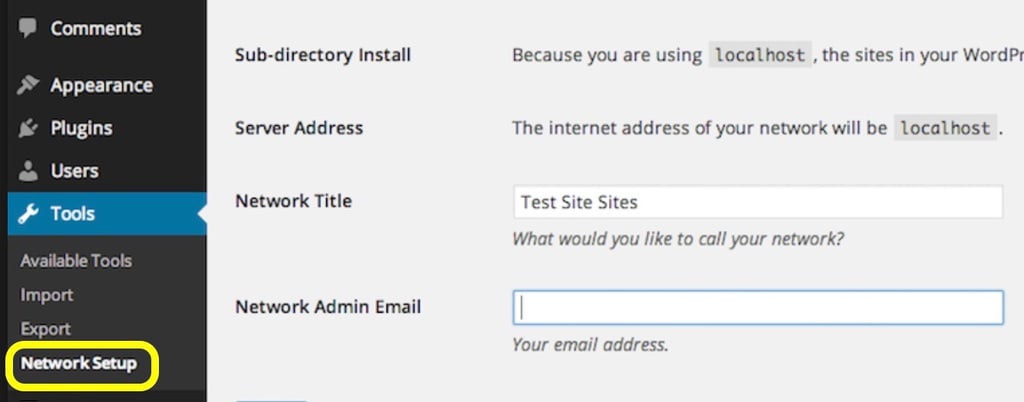
Once you've entered a network championship, select Install. You will be prompted to edit your wp-config.php and .htaccess files.
Open upwards your wp-config.phpfile over again. You'll need to add the following code below the lines yous added previously:
define('MULTISITE', true); ascertain('SUBDOMAIN_INSTALL', imitation); define('DOMAIN_CURRENT_SITE', 'localhost'); ascertain('PATH_CURRENT_SITE', '/'); define('SITE_ID_CURRENT_SITE', 1); define('BLOG_ID_CURRENT_SITE', ane); Next, you lot'll need to open up (or create) your .htaccess file in the same directory equally your wp-config.php file. And so, replace all the existing lines in that file with the following snippet:
# BEGIN WordPress RewriteEngine On RewriteBase / RewriteRule ^index\.php$ - [L] # add together a trailing slash to /wp-admin RewriteRule ^([_0-9a-zA-Z-]+/)?wp-admin$ $1wp-admin/ [R=301,L] RewriteCond %{REQUEST_FILENAME} -f [OR] RewriteCond %{REQUEST_FILENAME} -d RewriteRule ^ - [L] RewriteRule ^([_0-9a-zA-Z-]+/)?(wp-(content|admin|includes).*) $2 [L] RewriteRule ^([_0-9a-zA-Z-]+/)?(.*\.php)$ $2 [50] RewriteRule . alphabetize.php [Fifty] # Cease WordPress Save the file and close information technology. Now, y'all should be able to access private sites in your dashboard when yous log in to your local WordPress installation.
What to Do With Your Local WordPress Installation
Once y'all know how to use XAMPP and have a local WordPress site to experiment on, what you do side by side will largely depend on the kind of evolution project yous're embarking on. To get you started, WordPress.org offers a keen beginner'due south guide on how to test drive WordPress.
If you lot're interested in theme development, y'all may desire to meet our guide on how to develop a WordPress theme, or cheque out such sites as Theme Shaper. Using your local surroundings, you can safely edit your files to experiment with new themes and their associated functionality.
If yous want to acquire how to use XAMPP and WordPress together to test your coding cognition and gain more than PHP experience, there are a number of helpful guides for that every bit well. BitDegree and Code Academy both offer an fantabulous multifariousness of tutorials that cover PHP and HTML fundamentals, plus much more.
While using your local WordPress installation for development, yous'll too want to have resources at hand for troubleshooting and honing your skills. Stack Substitution is a thriving online forum where you tin pose questions to the WordPress development community, too as proceeds invaluable insights. Finally, you'll probably want to become a regular on the WordPress.org support forum.
Conclusion
As we have seen, XAMPP is a powerful and versatile solution for setting up a local web server. Information technology presents a perfect style to create an surround for basic WordPress coding, experimenting with multisite settings, tweaking themes, and much more. Though it is not the just tool that yous tin apply. A bully culling is setting up WordPress using Docker.
Do you have any questions most how to utilise XAMPP or your new local WordPress site? Let us know in the comments section below!
How To Use Xampp To Host A Website,
Source: https://www.hostinger.com/tutorials/how-to-use-xampp-wordpress/
Posted by: stanfordsulthen01.blogspot.com



0 Response to "How To Use Xampp To Host A Website"
Post a Comment